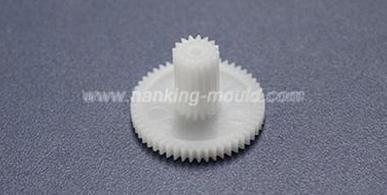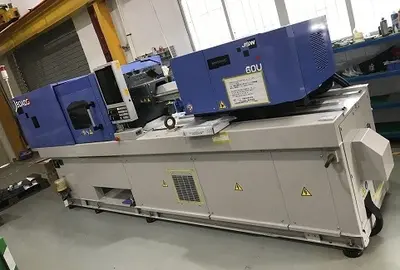

1. Precision gears have very high requirements on parameter size and performance. The parameters include the outer diameter of the addendum circle, the outer diameter of the tooth root circle, the modulus, the diameter of the index circle (also known as the common normal), the thickness of the index circle, the pressure angle, the inclination angle of the helical tooth, the ring gear runout tolerance, etc. In terms of performance, the selection of materials and the accuracy requirements of other assembly dimensions are included.
2. In terms of application, typical products such as the internal transmission parts of printers and copiers are commonly VCD disc drive brackets. If the gear does not meet the accuracy requirements, the bracket will appear unstable in and out, accompanied by vibration or swinging motion, and the voice will be extremely loud.
3. Precision gears are graded in terms of accuracy. The national standard is that the higher the level, the more precise it is, and the Japanese standard is that the smaller the level, the more precise it is. According to the JIS standard, most precision gear mold factories can only achieve grade 4 and grade 5 gears, and it is already a high level to be able to achieve grade 3 plastic gears.
The accuracy of the mold base will directly affect the manufacturing and injection accuracy of the gear mold, as well as the life of the mold. Experience has shown that the accuracy of general mold bases is generally difficult to meet the requirements of precision gear molds.
1. Gate: Generally, 3-point or 6-point balanced pouring is used, and micro-gear is usually poured by point.
2. Cavity ranking: 1~4 cavities are common. Small gears can reach 6 or 8 cavities; gears of different shapes can form 3 cavities. The most representative is the 4-cavity type.
3. The ejection method of the gear mold: There are common central cylinder and ejector pin ejection. For helical gears, it is necessary to add a bearing to assist ejection. The position of the bearing is sleeved on the cylinder needle and sleeved on the core of the mold core. The two ejection principles are the same.
4. Parting surface tube block: The cylindrical parting surface tube block must be installed.
5. The front and rear molds and inserts are cylindrical, so as to ensure the coaxiality of the product. The material is generally SKD61 and hardened to HRC52~56.
6. In terms of the accuracy of the cylinder and cylinder needles or small central inserts in key parts, the design accuracy usually requires a coaxiality of 0.02mm, which is more strict. In addition, the upper end of the center cylinder needle or the insert needle should be designed with a cylindrical straight tube position, and the insert part of the upper die should be inserted for positioning, so as to achieve a higher coaxiality of the front and rear die glue positions.






 Call us on:
Call us on:  Email Us:
Email Us:  1st Floor, Block1, No.3 Beiting Road, Houting Community, ShaJing Street, Bao'An District, Shenzhen City, Guangdong Province, China
1st Floor, Block1, No.3 Beiting Road, Houting Community, ShaJing Street, Bao'An District, Shenzhen City, Guangdong Province, China